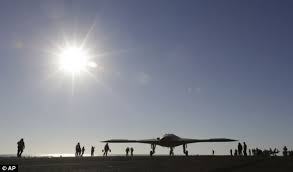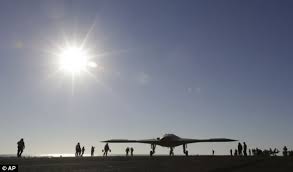
Britain and France are both reportedly clandestinely preparing state of the art fighter planes that are being prepared to challenge the US superiority in fighter jets.
Britain’s fighter jet, shrouded in secrecy is named as Taranis which, the unmanned stealth jet that is being built by BAE Systems and is perceived to be the next generation fighter plane for Britain.
Neuron is the name given to the unmanned test bed in France that is being prepared by Dassault Aviation as a as part of a six nation consortium.
The drones are being viewed as the demonstrators for the defence systems of the British and French governments. However a section of analysts see these two moves combined as a effort to develop the world’s most advanced unmanned combat jet that would have the ability to operate autonomously in highly hostile conditions.
This would also ensure that the EU could muster the technological capabilities required for the next generation of air warfare.
The global market for surveillance drones are dominated by the US and Israel and the European Union countries is viewed to be at least 10-15 years behind them. There is a perception in Europe that it has to act now to preserve the skills and industrial base that will ensure sovereign capability for fighter jets after the US made F-35, the newest generation of manned fighter jet, became operational .
Malcolm Chalmers, director of UK defence policy at the Royal United Services Institute echoed the view saying that Europe is losing the capability to build indigenous aircraft.
“The next decision to come along will be the future generation combat aircraft. Will we piggyback on US [development] or work with France? If we don’t design, the capability will atrophy,” says Chalmers.
Future Combat Air System, or FCAS, is the name given to a two-year government-funded study on the feasibility of development of superior aircraft to BAE and Dassault and the program is into its eighth month.
It has been a deliberate attempt by the two countries, Britain and France, not to include other EU members under assumptions of price escalations and increasing of complexities as happened with the seven-nation A400M military transport aircraft built by Airbus.
The study is trying to identify the exact for the military as far as unmanned combat aircraft is concerned in the next 20 years. The questions being asked are: ‘ will it have to fly with or in place of manned aircraft; what technology is available to deliver that; and, finally, what the cost might be’?
The actual production and inclusion of other countries would be done after obtaining specific answers to the above questions.
“We are not trying to design an aeroplane, we are looking at what the industrial construct would look like, how we build on the best of Taranis and Neuron,” says Martin Rowe-Willcocks, head of BAE’s FCAS programme.
The study includes some of the most well known industrial partners like Britain’s Rolls-Royce and Snecma of France helping on assessment of the propulsion system needed and Thales, the French electronics group and UK firm Selex on avionic systems that would be necessary in the future.
(Source: www.ft.com)





